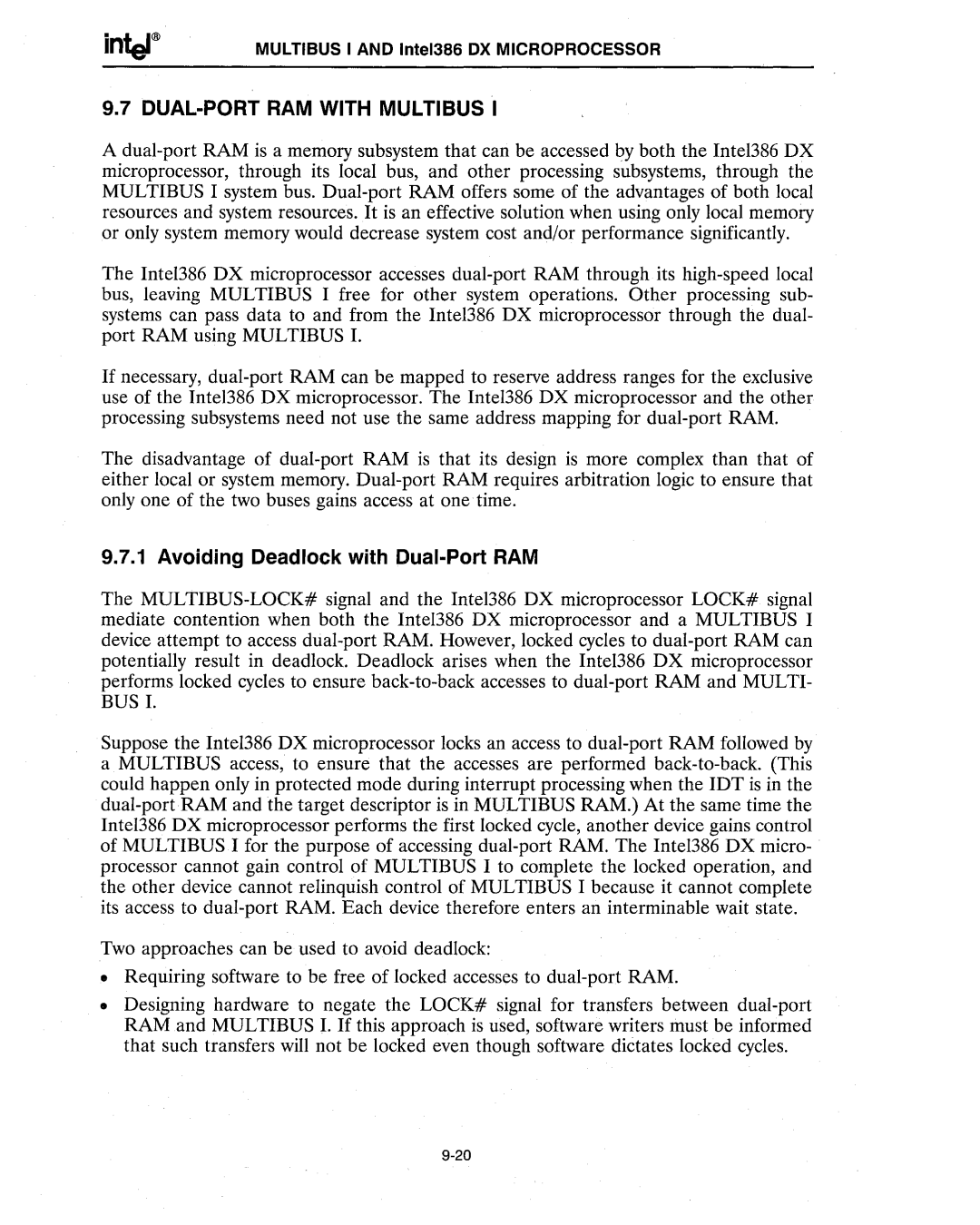MULTIBUS I AND Intel386 DX MICROPROCESSOR
9.7 DUAL-PORT RAM WITH MULTIBUS I
A dual-port RAM is a memory subsystem that can be accessed by both the Inte1386 DX microprocessor, through its local bus, and other processing subsystems, through the MULTIBUS I system bus. Dual-port RAM offers some of the advantages of both local resources and system resources. It is an effective solution when using only local memory or only system memory would decrease system cost and/or performance significantly.
The Inte1386 DX microprocessor accesses dual-port RAM through its high-speed local bus, leaving MULTIBUS I free for other system operations. Other processing sub- systems can pass data to and from the Intel386 DX microprocessor through the dual- port RAM using MULTIBUS I.
If necessary, dual-port RAM can be mapped to reserve address ranges for the exclusive use of the InteI386 DX microprocessor. The Intel386 DX microprocessor and the other processing subsystems need not use the same address mapping for dual-port RAM.
The disadvantage of dual-port RAM is that its design is more complex than that of either local or system memory. Dual-port RAM requires arbitration logic to ensure that only one of the two buses gains access at one time.
9.7.1 Avoiding Deadlock with Dual-Port RAM
The MULTIBUS-LOCK# signal and the Inte1386 DX microprocessor LOCK# signal mediate contention when both the Intel386 DX microprocessor and a MULTIBUS I device attempt to access dual-port RAM. However, locked cycles to dual-port RAM can potentially result in deadlock. Deadlock arises when the Intel386 DX microprocessor performs locked cycles to ensure back-to-back accesses to dual-port RAM and MULTI- BUS I.
Suppose the Intel386 DX microprocessor locks an access to dual-port RAM followed by
aMULTIBUS access, to ensure that the accesses are performed back-to-back. (This could happen only in protected mode during interrupt processing when the IDT is in the dual-port RAM and the target descriptor is in MULTIBUS RAM.) At the same time the InteI386 DX microprocessor performs the first locked cycle, another device gains control of MULTIBUS I for the purpose of accessing dual-port RAM. The Inte1386 DX micro- processor cannot gain control of MULTIBUS I to complete the locked operation, and the other device cannot relinquish control of MULTIBUS I because it cannot complete its access to dual-port RAM. Each device therefore enters an interminable wait state.
Two approaches can be used to avoid deadlock:
•Requiring software to be free of locked accesses to dual-port RAM.
•Designing hardware to negate the LOCK# signal for transfers between dual-port RAM and MULTIBUS I. If this approach is used, software writers must be informed that such transfers will not be locked even though software dictates locked cycles.
9-20

